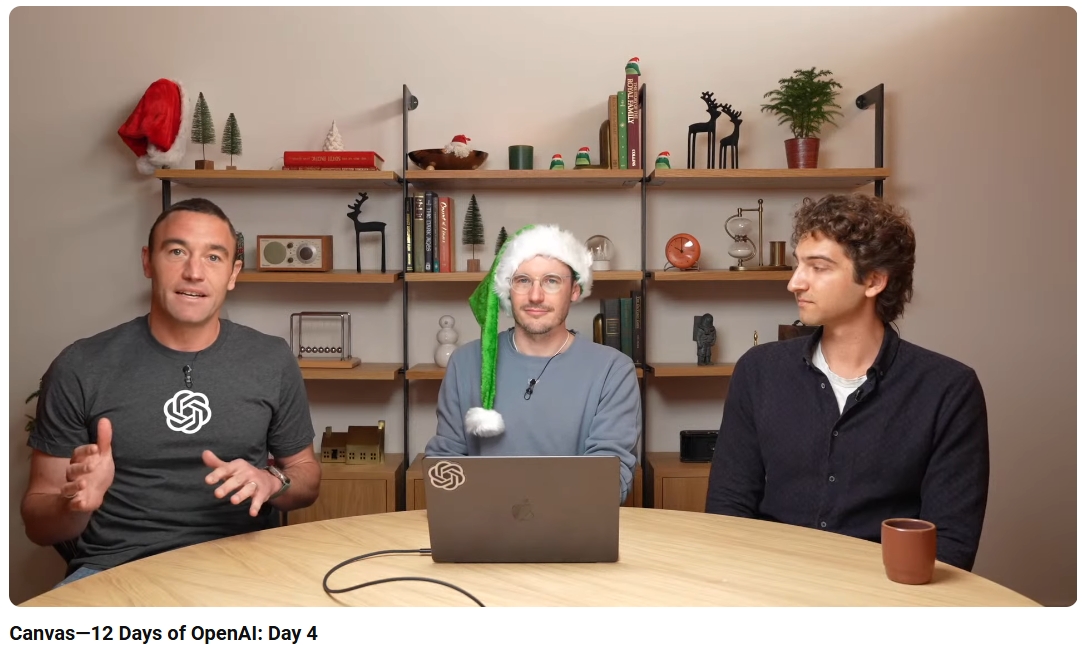On the fourth day of OpenAI’s ongoing 12-day launch event, several exciting new features were introduced, most notably the launch of ChatGPT’s Canvas. Below is a summary of the key points and detailed features of this new tool.
1. ChatGPT’s New Word Editor: “Canvas”
OpenAI launched a new feature called “Canvas”, a built-in word editor that allows users to interact with GPT while writing text, similar to using a standard word processor like Microsoft Word. One of the standout features is that Canvas also supports running code directly within the editor. This makes it easier for users to combine text creation and coding without switching between different tools.
2.Canvas Feature is Free
The Canvas feature has been rolled out directly to the web interface and is available to everyone for free. In practical use, while the code execution can be slow for free-tier users, all other features are fully accessible.
3. Canvas Functionality in Detail
Editing GPT-Generated Content
Canvas allows users to edit the text generated by GPT. For example, if you ask GPT to generate a 20-day Japanese language learning plan, you can easily modify the text to suit your needs. Additionally, you can adjust the education level slider in the bottom-right corner to customize the complexity of the content. For instance, increasing the level to “Graduate” will make GPT include more advanced topics, like integrating cultural aspects into the Japanese learning plan.
Article Feedback and Editing
One of the most practical features is Canvas’s ability to review and provide feedback on your writing. You can upload documents, such as a simple work plan, and GPT will highlight areas that need optimization, much like Microsoft Word’s “Track Changes” feature. This makes it easier for users to improve their writing, whether it’s for professional or personal purposes.
Code Generation and Execution
Canvas also supports code generation and execution, which fills a significant gap that existed in earlier versions of GPT, where the model could help debug code but not run it. With Canvas, you can:
Request GPT to generate specific code snippets (e.g., for complex charts like Sankey diagrams). GPT will write the code and execute it within the editor, providing you with an immediate result.
You can also paste faulty code into Canvas. When you run it, GPT will detect errors, highlight them, and provide a “Fix Errors” button. After clicking this button, GPT will automatically correct the code, run it again, and deliver the corrected version for you to use in your own IDE.

